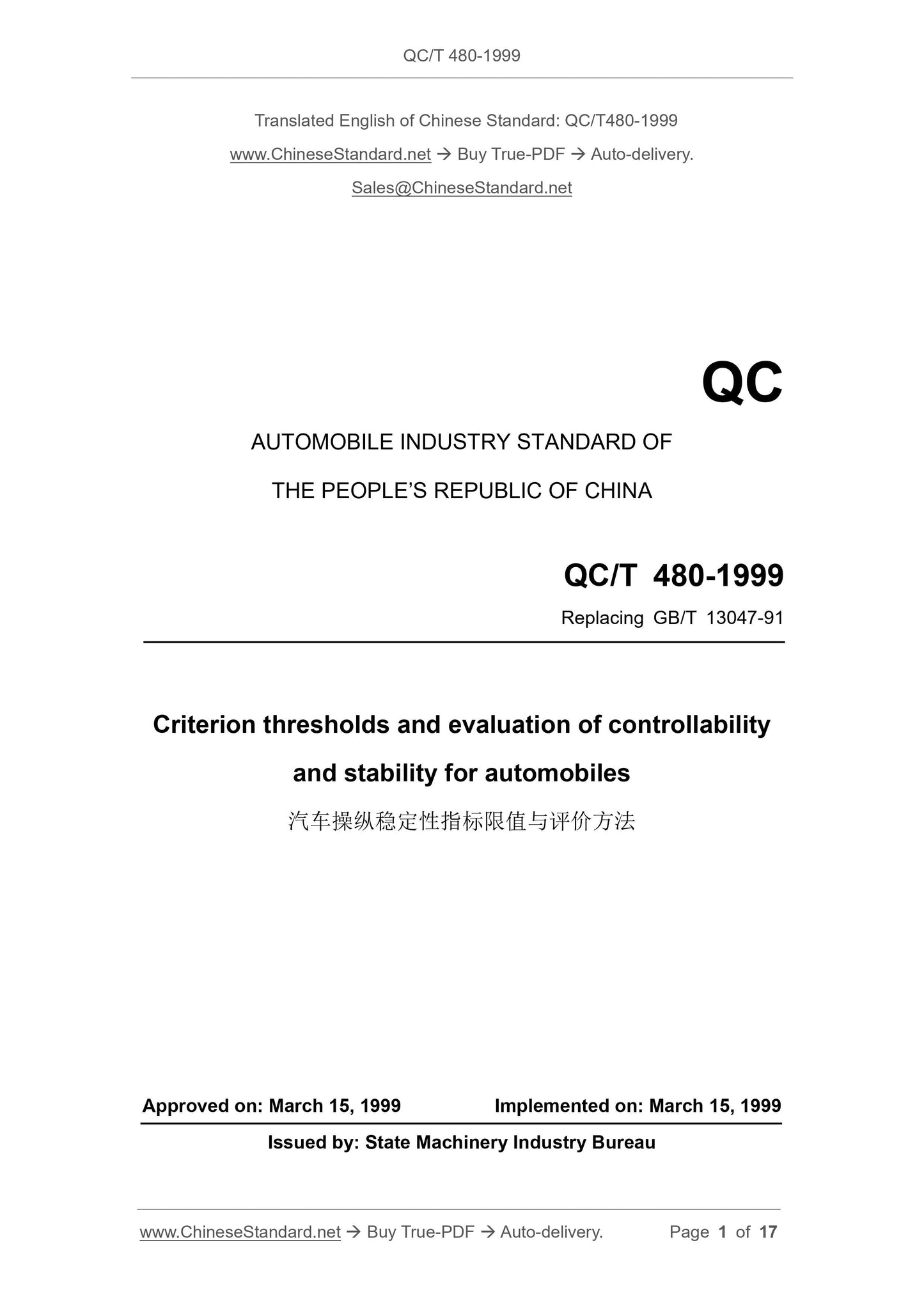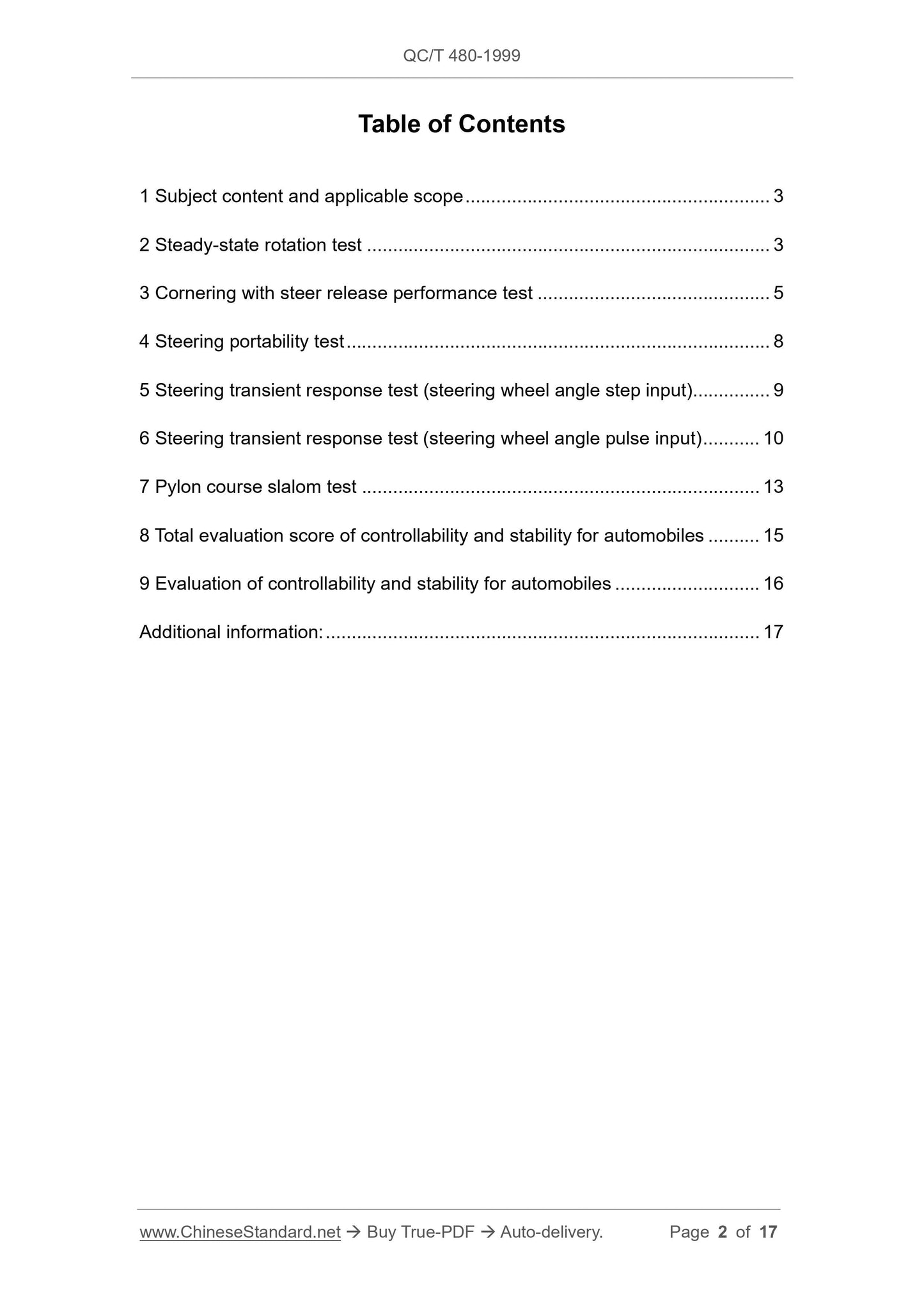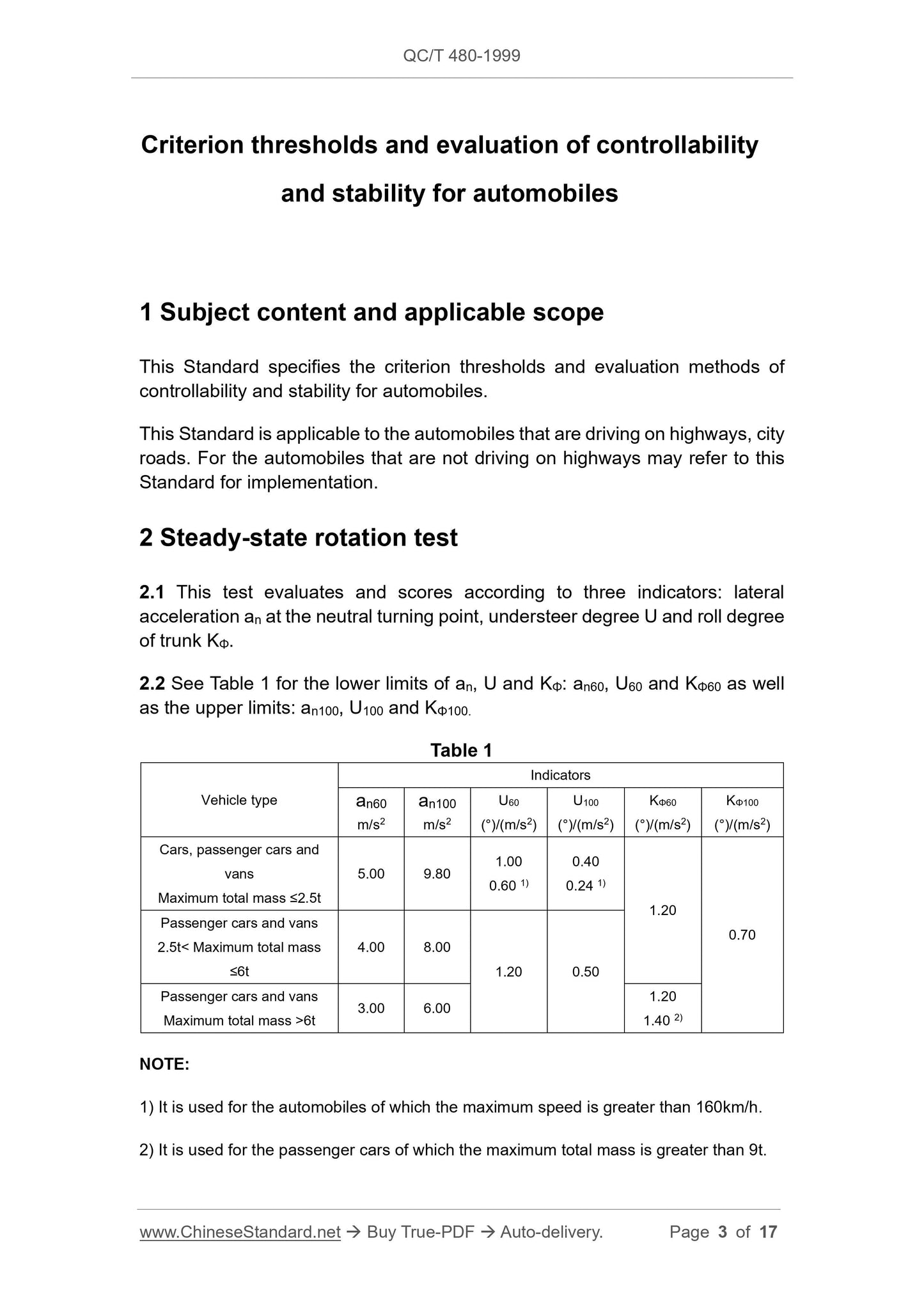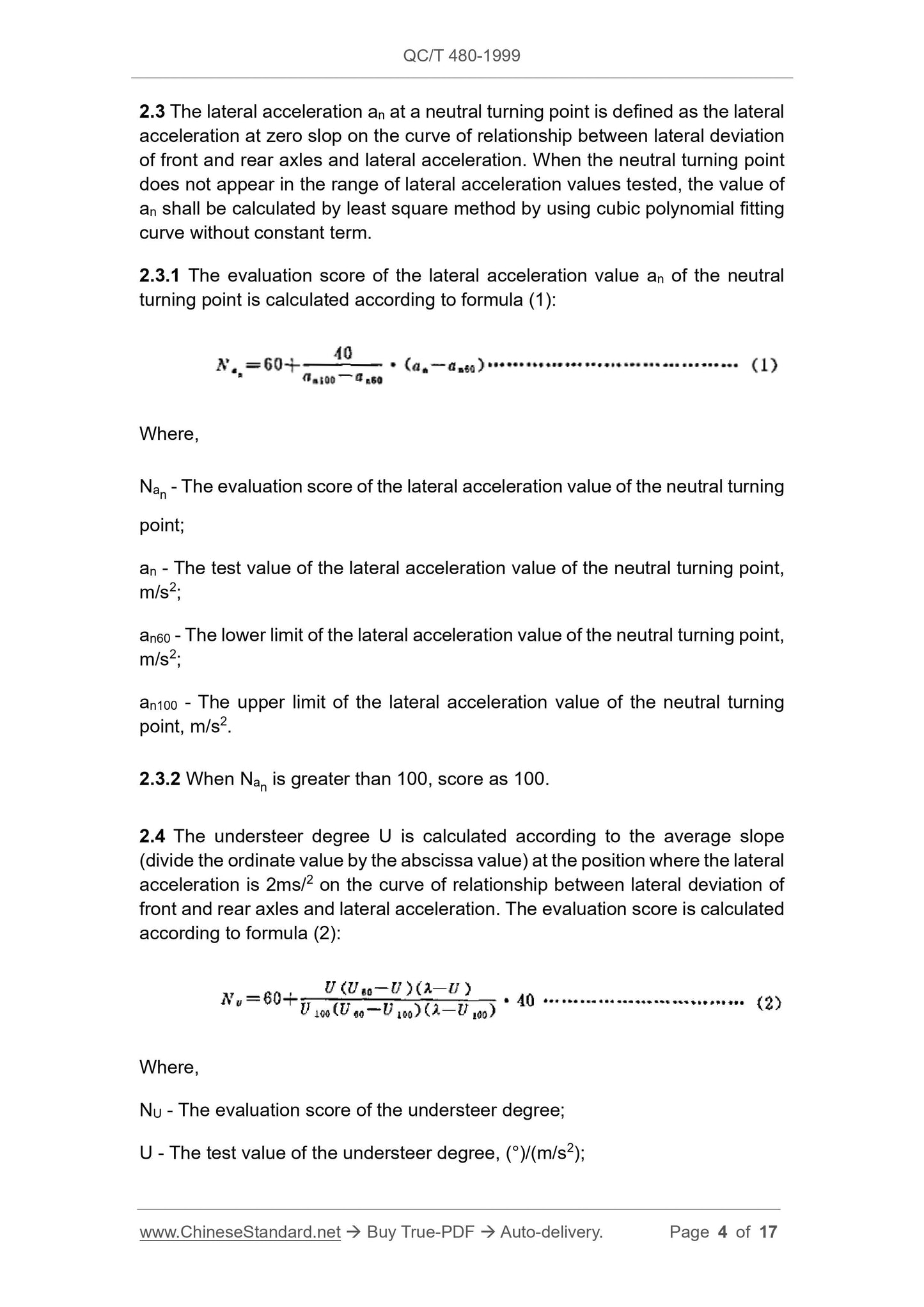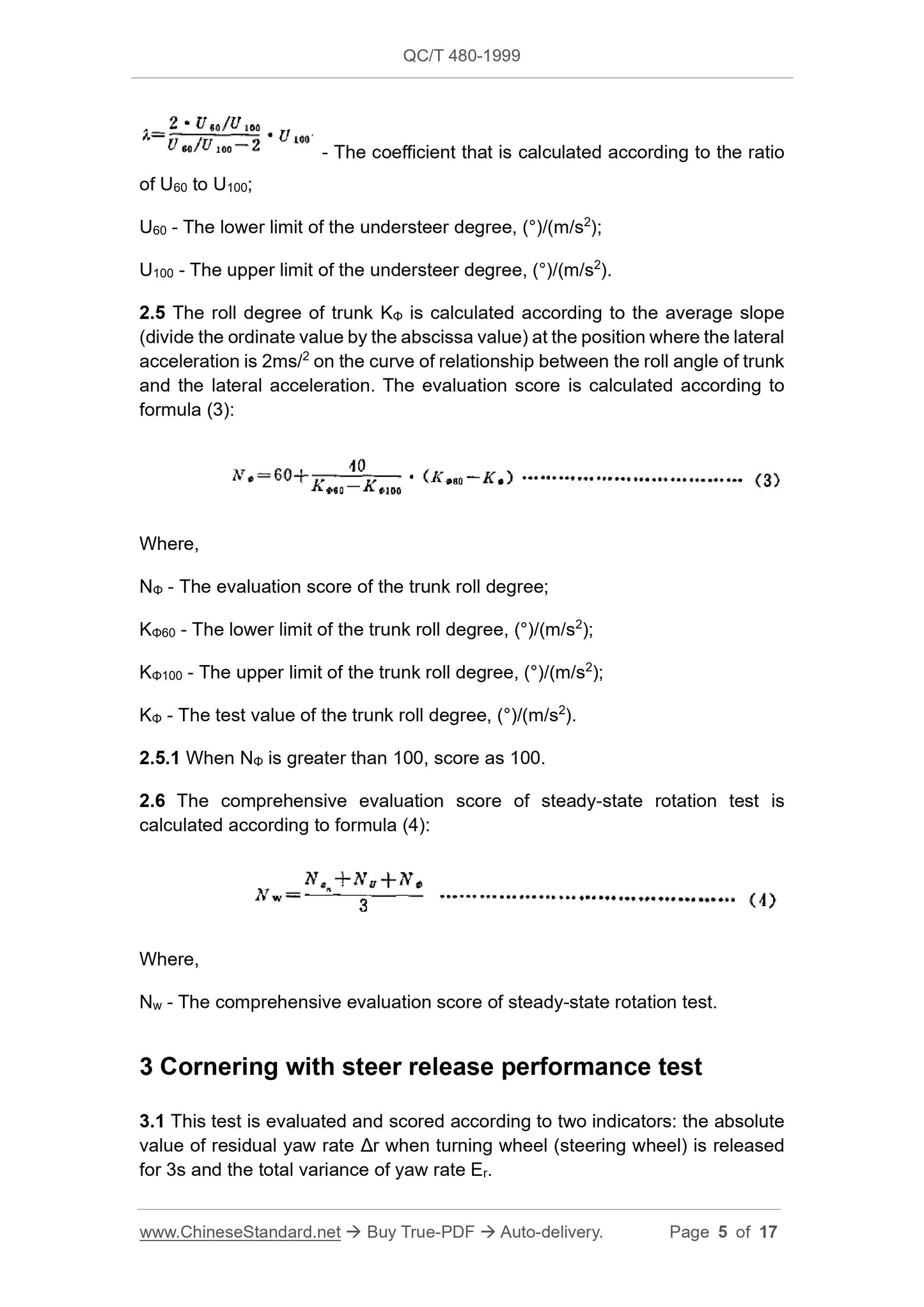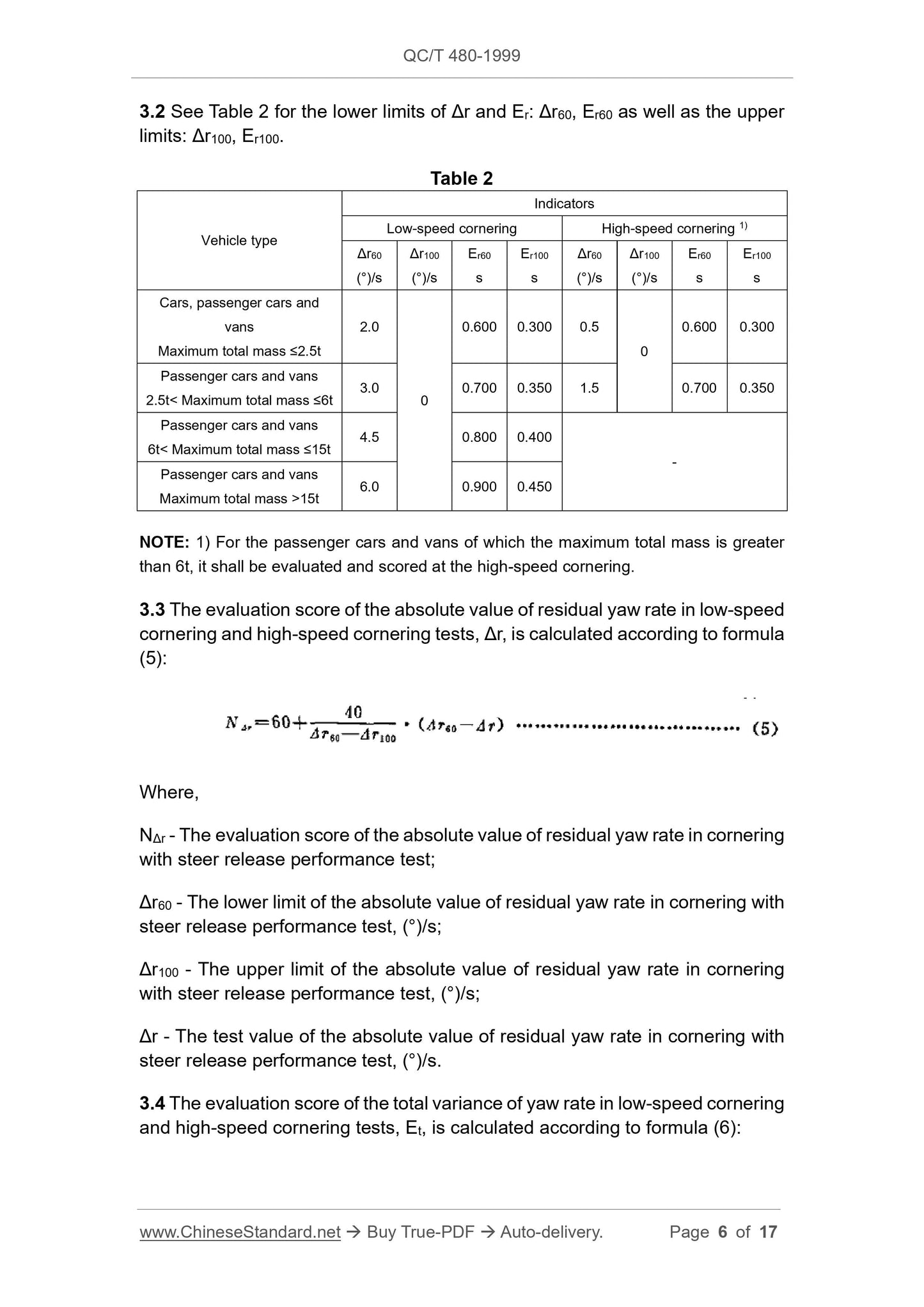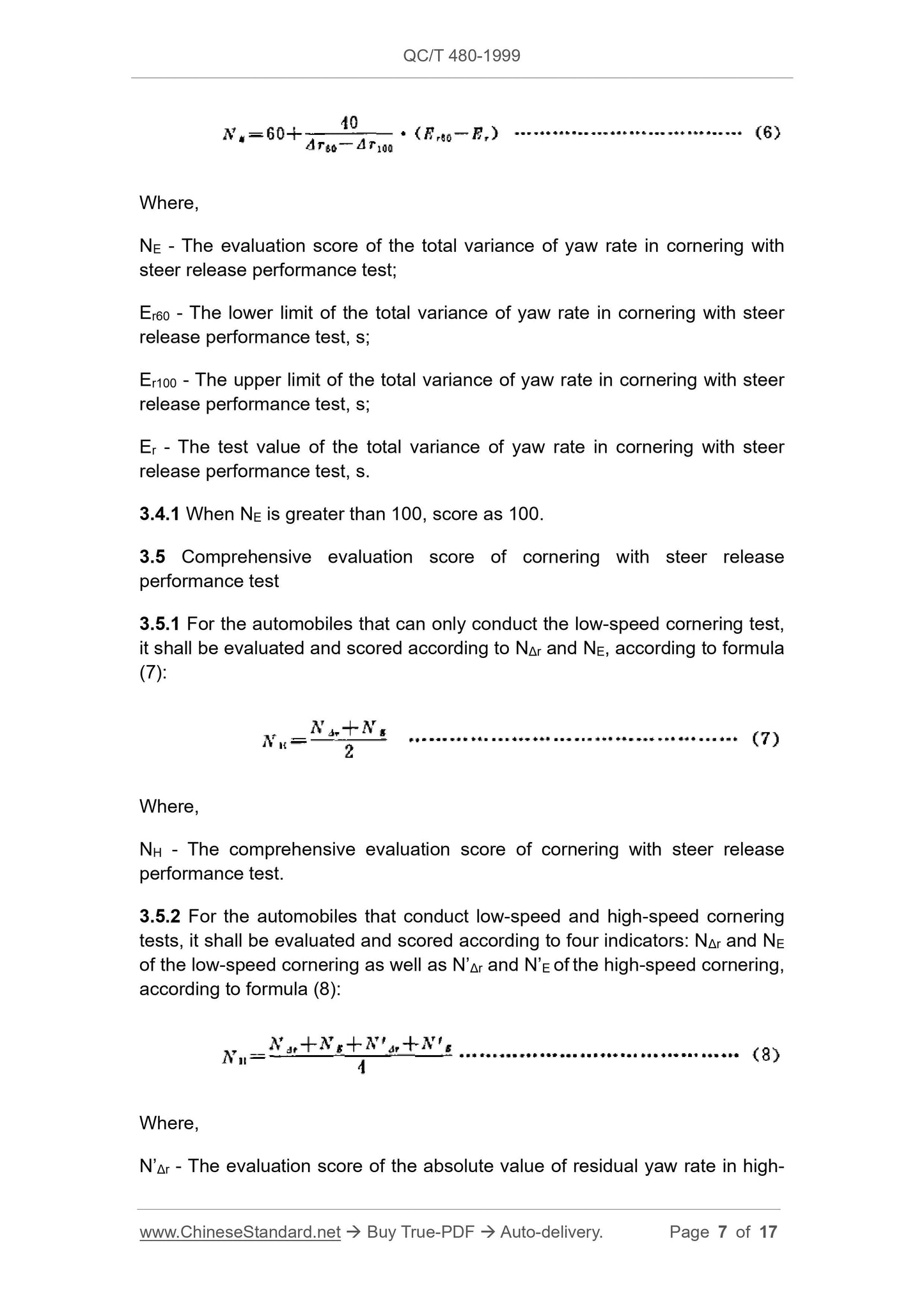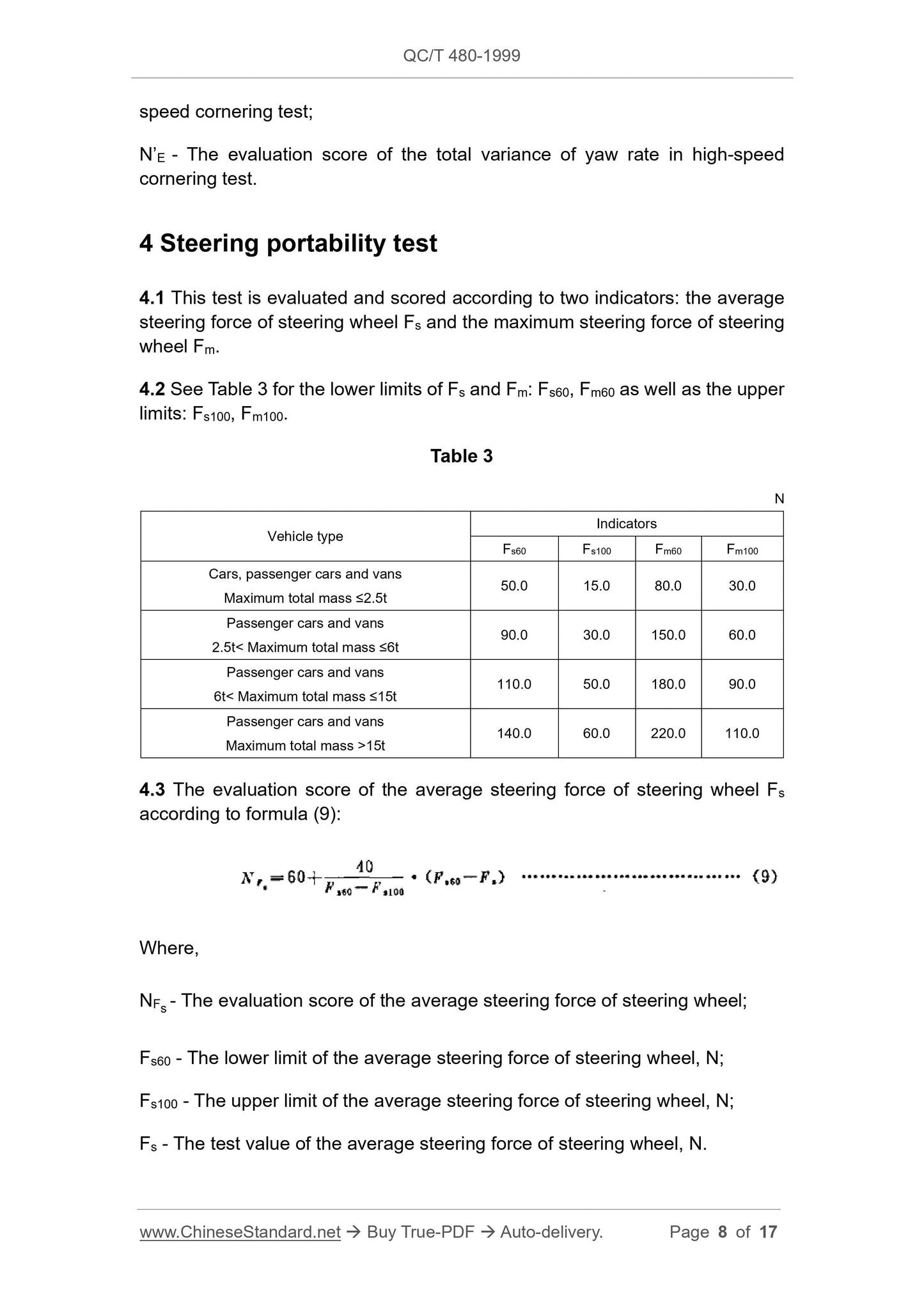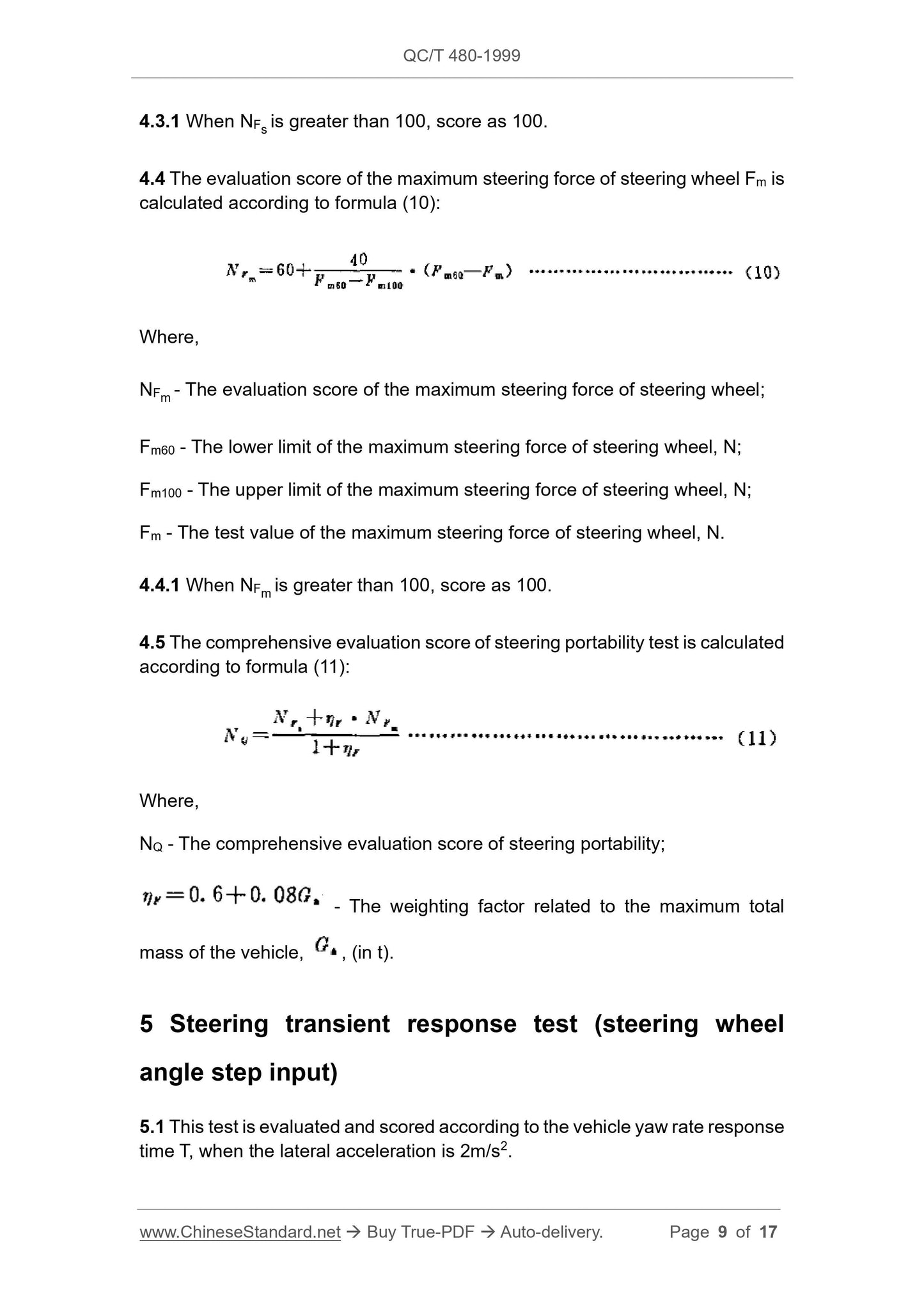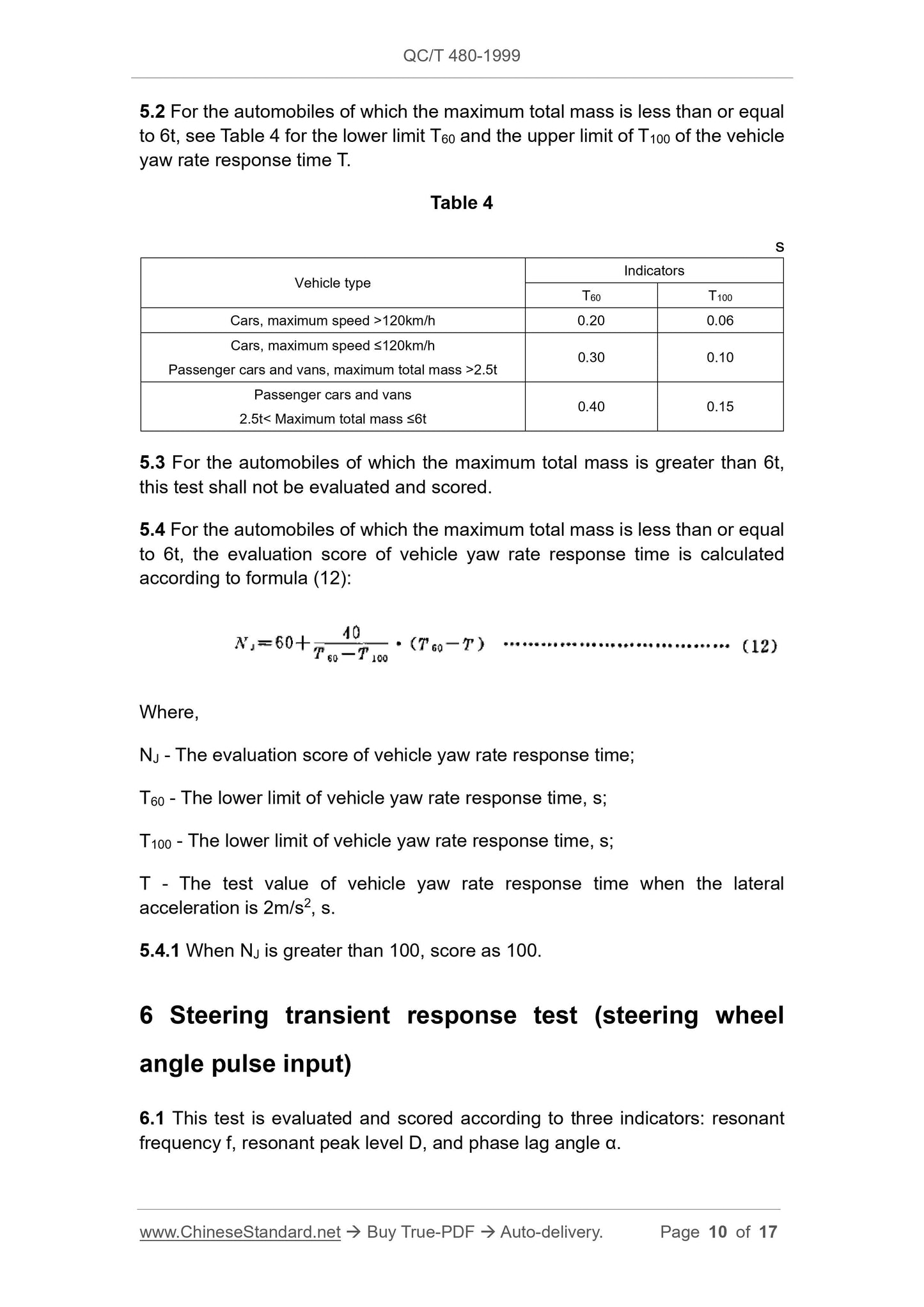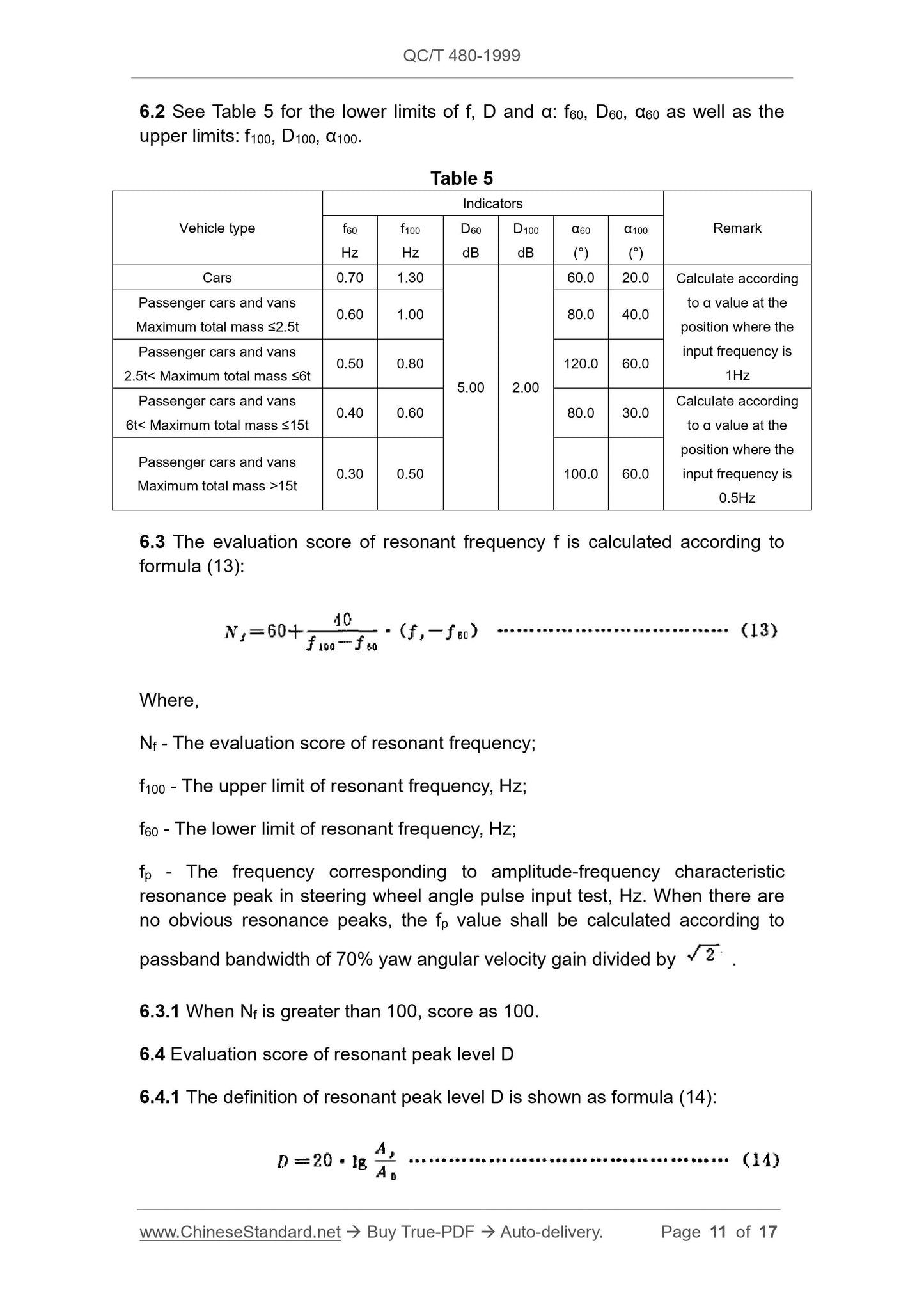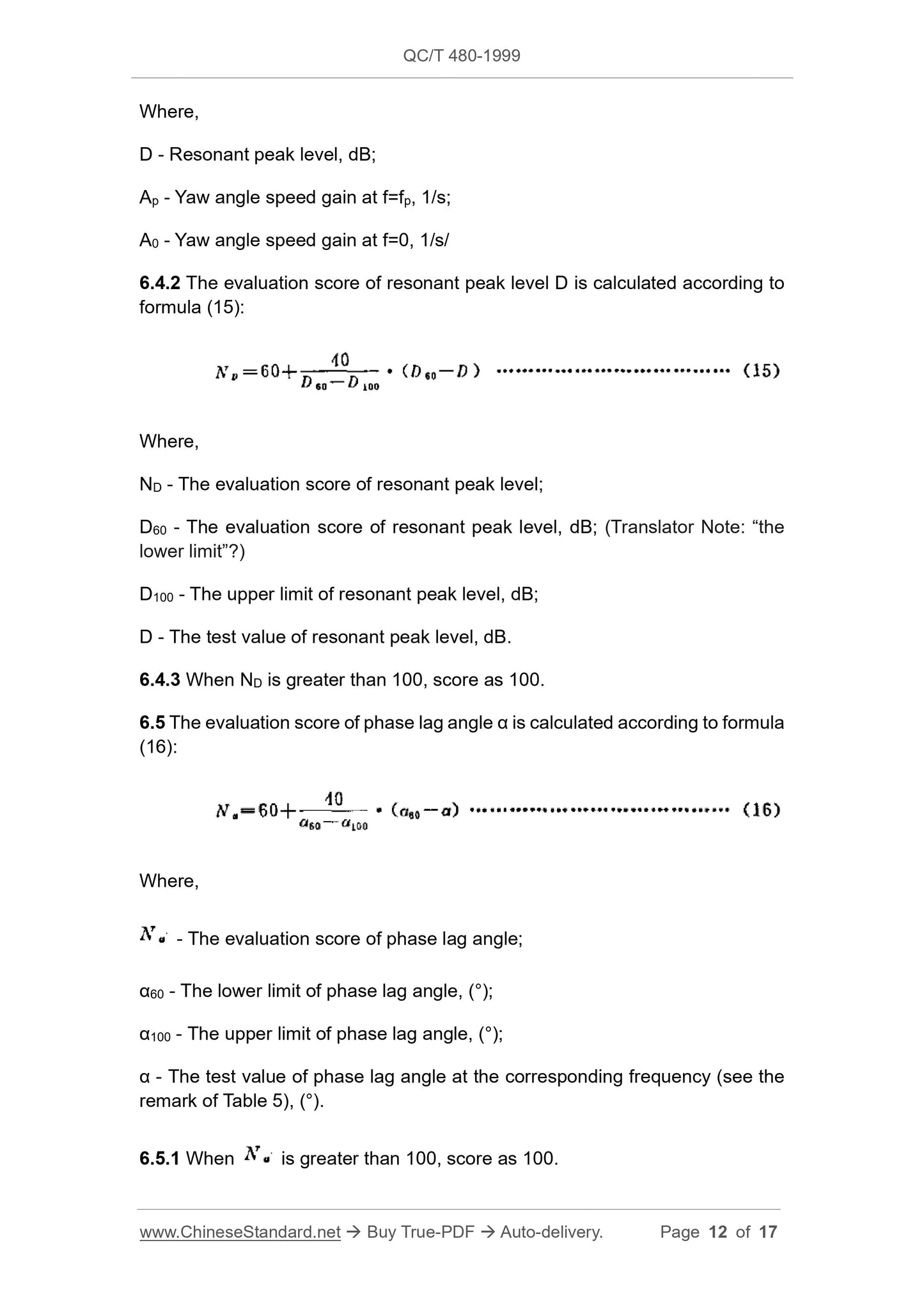1
/
of
12
www.ChineseStandard.us -- Field Test Asia Pte. Ltd.
QC/T 480-1999 English PDF (QC/T480-1999)
QC/T 480-1999 English PDF (QC/T480-1999)
Regular price
$90.00
Regular price
Sale price
$90.00
Unit price
/
per
Shipping calculated at checkout.
Couldn't load pickup availability
QC/T 480-1999: Criterion thresholds and evaluation of controllability and stability for automobiles
Delivery: 9 seconds. Download (and Email) true-PDF + Invoice.Get Quotation: Click QC/T 480-1999 (Self-service in 1-minute)
Newer / historical versions: QC/T 480-1999
Preview True-PDF
Scope
This Standard specifies the criterion thresholds and evaluation methods ofcontrollability and stability for automobiles.
This Standard is applicable to the automobiles that are driving on highways, city
roads. For the automobiles that are not driving on highways may refer to this
Standard for implementation.
Basic Data
| Standard ID | QC/T 480-1999 (QC/T480-1999) |
| Description (Translated English) | Criterion thresholds and evaluation of controllability and stability for automobiles |
| Sector / Industry | Automobile and Vehicle Industry Standard (Recommended) |
| Classification of Chinese Standard | T23 |
| Word Count Estimation | 13,166 |
| Date of Issue | 6/21/1905 |
| Date of Implementation | 1999-03-15 |
| Older Standard (superseded by this standard) | GB/T 13047-1991 |
| Summary | This standard specifies the limits for vehicle handling and stability indicators and evaluation methods. This standard applies to the highways, urban roads cars, non-public road a motor vehicle may refer to. |
Share
